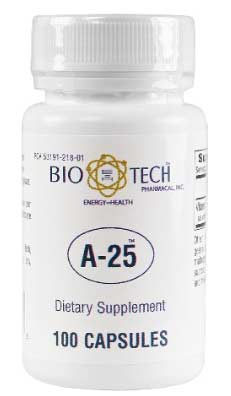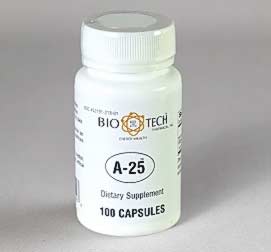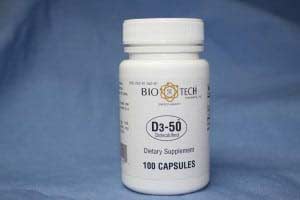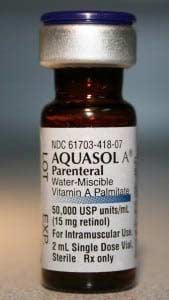Category: Vitamin A
Nyctalopia (Night Blindness) An Early Sign of Vitamin A Deficiency with Video
September 04, 2014 3:08 pm
Nycalopia or Night Blindness is a side effect of Vitamin A deficeincy. Vitamin A is a fat soluble vitamin that occurs in animal tissue as retinol. There are a number of different provitamins in food of vegetable origin. Beta carotene and other carotenoids, yellow and red carotenoid pigments, can be changed to vitamin A in the liver.
A number of functions for vitamin A have been found, including immune mechanisms, maintenance of healthy epithelial tissues, facilitates the mobilization iron from stores to developing red blood cells, and most importantly, a function in the visual system. Vitamin A deficiency may manifest itself by: 1.) A scale-like appearance in the skin and occasional acne, 2.) A failure of growth in young animals, including C. station of skeletal growth, and 3.) A failure of reproduction associated with atrophy of the epithelial cells of the testes and interruption of the female sexual cycle. Zinc works with Vitamin A by converting retinol to retinal and also protects from toxicity of Vitamin A. Vitamin A deficiency can worsen Iron Deficiency Anemia. It has been shown that treatment for Iron Deficiency Anemia responds better when Vitamin A and Iron are supplemented together.
Vitamin A deficiency may also represent a decreased visual acuity, more specifically, night blindness. Night Blindness was found in a patient who reported that they were unable to read a particular sign at night while driving, but was able to read it during the day. The body uses Vitamin A to make retinal, part of a molecule called rhodopsin. Rhodopsin is found in the rods of the eye. The rods are the cells of the retina that allow you to see in low light conditions. Here is a video of a patient exhibiting the effect of night blindness.
If Vitamin A deficiency is left untreated at the stage of night blindness it can progress to Xerophthalmia. Xerophthalmia is also caused by Vitamin A deficiency. The symptoms of Xerophthalmia is lack of tear production which are the lubrication of the eye. This leads to corneal and conjunctiva inflammation and thickening. The cornea can become cloudy and foamy spots (Bitot’s spots) leading to scarring and damage that effect the sight.
When a patient is diagnosed with vitamin A deficiency, the treatment will require aggressive oral supplementation. Duodenal Switch patients will only respond to “Dry” water miscible form of Vitamin A, which is pictured below/right. This “Dry” water miscible form is a powder which is designed to dissolve in water without the addition of bile for absorption. When taking oral vitamin A, it is important for patients who have had the Duodenal Switch operation to specifically look for a “Dry” water miscible form of vitamin A. This is to maximize the amount of vitamin A that can be absorbed even in the presence of reduced fat absorption.
For cases in which vitamin A levels do not respond to “Dry” water miscible Vitamin A oral supplementation, intramuscular injections may be required. The usual injected dosage of vitamin A is between 25,000-50,000 international units. Repeated injections in a 3-month interval have been required in some patients to normalize the vitamin A level, as well as resolving the symptom of night blindness.
Patch or Spray Vitamins
August 15, 2014 10:37 pm
At the last group meeting, there were several questions whether vitamin D and other vitamins would be absorbed via patch (transdermal) and spray (buccal/sublingual) routes. After reviewing several resources, the only article I could find was for transdermal Vitamin D absorption. However, if we look at the mechanism for each route we can make an educated assumption.
Transdermal route of absorption (without additional absorption enhancers) (ref) requires a molecular mass less than 500 g/mole, high lipophilicity (affinity to fat or lipids), and low required daily dose (less than 2mg). The fat-soluble vitamins are definitely lipophilic, all of them have molecular weights less than 500 g/mole and daily dose is under 2mg. It seems that hydrophilic medications (that have an affinity to water) may have less ability to be absorbed with this route unless a chemical enhancer is added to the product. Most vitamins and minerals have lower molecular weights except Vitamin B12 which has too high of a molecular weight unless an enhancer is added. The transdermal route has slower absorption than buccal (oral mucosa) but faster than usual tablet oral route. The down side to transdermal route is possible skin issues due to medication, adhesives, and also different rates of absorption due to skin thickness and condition.
Buccal/sublingual route of absorption is dependent on lipid solubility, oil to water partition coeffincient, saliva pH, small to moderate molecular weight, and oral mucosa thickness. The mechanism of action is osmosis, which means items that readily dissolve in water are easily absorbed. Unlike orally ingested medicates, that take time to absorb and need to be filtered and/or processed in the liver, sublingual route is fast absorbing and the liver is bypassed. The down side to this route is it disrupts eating and drinking and is not efficient with smoking due to vasoconstriction.
An e-mail was sent to the companies inquiring about the outcomes of their products with people with malabsorption issues. No response was received from the spray vitamin companies.A request was also sent to obtain any research articles they may have but a response has not been received at this time. The following is the response I received from the maker of Patch MD.
“I am the president and founder of Patch MD. We design Patch MD to help people that have digestive issues and malabsorption. Our whole premise is to avoid the digestive track, by doing so we avoid dealing with conditions such as short bowel syndrome, acid reflux, and bariatric surgery to name a few. People also with Crohn’s disease and iliac disease are challenged with digestion and absorption every day of their life. Our patches are designed specifically to pass nutrition through the skin into the bloodstream. We get letters every day from people that have had bariatric surgery and were unable to get vitamin D, calcium, the B’s and Vitamin A and K, our product works because we use the skin as our delivery system, absorption is through the skin, avoiding all digestive potential issues. The only problem that we may have is we tell our customers to use no lotions or cream in the patch application area, as you may understand it will prevent absorption. We are going to be at a national convention this weekend in Manhattan Beach California to take part and display our products at the ObesityHelp conference. They ask us to take part as they were getting great reviews from their members that are using the patch. All were improving their blood work after taking Patch MD patches.”
Earl Hailey, President Patch MD
In light of the review of data, it would seem that the transdermal route would be beneficial to people who are having issues maintaining blood levels of fat-soluble vitamin levels. The other vitamins also have a good prospect of absorption via transdermal route. Buccal or sublingual (sprays) would seem to have a better outcome for water-soluble vitamins unless there is an additive added to the product to increase the solubility of the fat-soluble vitamins and make them water miscible. We must realize that there is no data for Duodenal Switch patients and very little data regarding these routes of absorption with vitamins specifically. If you are going to try these types of vitamins you should be extremely diligent in following your laboratory studies for vitamin levels with greater frequency until it is determined they are maintaining your blood levels.
Also, it should be noted that water miscible (dry) Vitamin A, D, E, K are the only type of these vitamins a DS patients should be taking. Over the counter Vitamin A, D, E, K are fat-soluble and due to the fat malabsorption after DS these type of vitamins are not appropriate to maintain blood levels. Water miscible (dry) vitamins should NOT be taken with fatty or oily foods and should also be taken 30 minutes prior or 30 minutes after eating. The water miscibility makes them water soluble and therefore will not have optimal absorption if taken with fat. Fat also increases the rate of digestion through the small bowel after DS and decreases the amount of time the vitamin has in the bowel and therefore, decreases absorption. They are best absorbed when taken on their own.
The good news patches and spray routes of administering medications and supplements is an up and coming area of research. There are several ongoing research studies and new developments on the horizon for increasing absorbability of transdermal route with different types of additives and techniques.
Vitamin’s Physical State And Solubility are Two Different Things.
March 29, 2014 6:11 pm
Vitamins And Minerals
March 29, 2014 5:26 pm
|
Vitamins -Minerals |
Function |
Source |
Problems with deficiency |
|
B1 (Thiamine) |
Carbohydrate conversion, breaks down fats and protein, digestion, nervous system, skin, hair, eyes, mouth, liver, immune system |
Pork, organ meats, whole grain and enriched cereals, brown rice, wheat germ, bran, brewer’s yeast, blackstrap molasses |
Heart, age-related cognitive decline, Alzheimer’s, fatigue |
|
B2 (Riboflavin) |
Metabolism, carbohydrate conversion, breaks down fat and protein, digestion, nervous system, skin, hair, eyes, mouth, liver, antioxidant |
Brewer’s yeast, almonds, organ meats, whole grains, wheat germ, mushrooms, soy, dairy, eggs, green vegetables |
Anemia, decreased free radical protection, cataracts, poor thyroid function, B6 deficiency, fatigue, elevated homocysteine |
|
B3 (Niacin) |
Energy, digestion, nervous system, skin, hair, eyes, liver, eliminates toxins, sex/stress hormones, improves circulation |
Beets, brewer’s yeast, meat, poultry, organ meats, fish, seeds, and nuts |
Cracking, scaling skin, digestive problems, confusion, anxiety, fatigue |
|
B5 (Pantothenate) |
RBC production, sex and stress-related hormones, immune function, healthy digestion, helps use other vitamins |
Meat, vegetables, whole grains, legumes, lentils, egg yolks, milk, sweet potatoes, seeds, nuts, wheat germ, salmon |
Stress tolerance, wound healing, skin problems, fatigue |
|
B6 (Pyridoxine) |
Enzyme protein metabolism, RBC production, reduces homocysteine, nerve and muscle cells, DNA and RNA, B12 absorption, immune function |
Poultry, tuna, salmon, shrimp, beef liver, lentils, soybeans, seeds, nuts, avocados, bananas, carrots, brown rice, bran, wheat germ, whole grain flour |
Depression, sleep and skin problems, elevated homocysteine, increased heart disease risk |
|
B12 (Cobalamin) |
Healthy nerve cells, DNA/RNA, RBC production, iron function |
Fish, meat, poultry, eggs, milk and milk products |
Anemia, fatigue, constipation, loss of appetite, weight, numbness and tingling in the hands ad feet, depression, dementia, poor memory, oral soreness |
|
Biotin |
Carbs, fat, and amino acid metabolism (the building blocks of protein) |
Salmon, meats, vegetables, grains, legumes, lentils, egg yolks, milk, sweet potatoes, seeds, nuts, wheat germ |
Depression, nervous system, premature graying, hair, skin |
|
Folate |
Mental health, infant DNA/RNA, adolescence and pregnancy, with B12 to regulate RBC production, iron function, reduce homocysteine |
Supplementation, fortified grains, tomato juice, green vegetables, black-eyed peas, lentils, beans |
Anemia, immune function, fatigue, insomnia, hair, high homocysteine, heart disease |
|
Eyes, immune function, skin, essential cell growth and development |
Milk, eggs, liver, fortified cereals, orange or green vegetables and fruits |
Night blindness, immune function, zinc deficiency, fat malabsorption |
|
|
Calcium and phosphorus levels, calcium absorption, bone mineralization |
Sunlight, milk, egg yolk, liver, fish |
Osteoporosis, calcium absorption, thyroid |
|
|
Vitamin E |
Antioxidant, regulates oxidation reactions, stabilizes cell membrane, immune function, protects against cardiovascular disease, cataracts, macular degeneration |
Wheat germ, liver, eggs, nuts, seeds, cold pressed vegetable oils, dark leafy greens, sweet potatoes, avocado, asparagus |
Skin, hair, rupturing of red blood cells, anemia, bruising, PMS< hot flashes, eczema, psoriasis, cataracts, wound healing, muscle weakness, sterility |
|
Calcium |
Bones, teeth, helps heart, nerves, muscles, body systems work properly, needs other nutrients to function |
Dairy, wheat/soy flour, molasses, brewer’s yeast, Brazil nuts, broccoli, cabbage, dark leafy greens, hazelnuts, oysters, sardines, canned salmon |
Osteoporosis, osteomalacia, osteoarthritis, muscle cramps, irritability, acute anxiety, colon cancer risk |
|
Chromium |
Assists insulin function, increased fertility, carbohydrate/fat metabolism, essential for fetal growth/development |
Supplementation, brewer’s yeast, whole grains, seafood, green beans, broccoli, prunes, nuts, potatoes, meat |
Metabolic syndrome, insulin resistance decreased fertility |
|
Magnesium |
300 biochemical reactions, muscle/nerve function, heart rhythm, immune system, strong bones, regulates calcium, copper, zinc, potassium, vitamin D |
Green vegetables, beans & peas, nuts and seeds, whole unprocessed grain |
Appetite, nausea, vomiting, fatigue, numbness, tingling, cramps, seizures, personality changes, heart rhythm, heart spasms |
|
Selenium |
Antioxidant, works with vitamin E, immune function, prostaglandin production |
Brewer’s yeast, wheat germ, liver, butter, cold water fish, shellfish, garlic, whole grains, sunflower seeds, Brazil nuts |
Destruction to heart/pancreas, sore muscles, fragility of red blood cells, immune system |
|
Zinc |
Supports enzymes, immune system, wound healing, taste/smell, DNA synthesis, normal growth & development during pregnancy, childhood adolescence |
Oysters, red meat, poultry, beans, nuts, seafood, whole grains, fortified breakfast cereals, and dairy |
Growth retardation, hair loss, diarrhea, impotence, eye & skin lesions, loss of appetite, taste, weight loss, wound healing, mental lethargy |
|
COQ10 |
Powerful antioxidant, stops oxidation of LDL cholesterol, energy production, important to heart, liver, and kidneys |
Oily fish, organ meats, and whole grains |
Congestive heart failure, high blood pressure, angina, mitral valve prolapsed, fatigue, gingivitis, immune system stroke, cardiac arrhythmias |
|
Carnitine |
Energy, heart function, oxidize amino acids for energy, metabolize ketones |
Red meat, dairy, fish, poultry, (fermented soybeans), wheat, asparagus, avocados, peanut butter |
Elevated cholesterol, liver function, muscle weakness, reduced energy, impaired glucose control |
|
N-Acetyl Cystein (NAC) & Glutathione |
Glutathione production, lowers homocysteine, lipoprotein, heal lungs, inflammation, decrease muscle fatigue, liver detoxification, immune function |
Meats, ricotta, cottage cheese, yogurt, wheat germ, granola, and oat flakes |
Free radical overload, elevated homocysteine, cancer risk, cataracts, macular degeneration, immune function, toxin elimination |
|
Alpha Lipoic Acid |
Energy, blood flow to nerves, glutathione levels in brain, insulin sensitivity, effectiveness of vitamins C, E, antioxidants |
Supplementation, spinach, broccoli, beef, brewer’s yeast, some organ meats |
Diabetic neuropathy, reduced muscle mass, atherosclerosis, Alzheimer’s, failure to thrive, brain atrophy, high lactic acid |
Vitamin D And A -Dry (Water soluble) Formulary
August 24, 2013 7:57 pm
Vitamin A and D are fat soluble vitamins. This means that in order for them to be absorbed by the GI track, them need to be absorbed by fat globules (chylomicrons). These are then taken up by the lymphatics of the GI track and taken to the blood stream. With the anatomical changes of the Duodenal Switch, the fat absorption capacity is significantly reduced. This results in excellent weight loss. It also results in much diminished absorption of the Fat soluble vitamins A, D, E and K. It is essential to use Dry Water Soluble forms of Vitamins A, D, E, and K. Bio-Tech is a brand that is formulated in this manner.
The Biotech D3-50 has 50,000IU of Vitamin D.
We recommend specific dosages of dry (water soluble) Vitamin A and D. These are not available at most pharmacies. In fact when our recommendations are presented at most pharmacies they are incorrectly dispensed with the fat soluble variety with is worth less becasue it is not absorbed by the duodenal switch patients. It is also important to not that this type of vitamin should not be taken with any dietary fat. Fat can inhibit the absorption of this type of vitamin. When ordering online, please make sure that the “Dry” or “Water Soluble” formulary is ordered.
Injectable Vitamin A and Vitamin D
June 20, 2013 11:24 pm
Injectable Vitamin A and Vitamin D can improve vitamin status post weight loss surgery. One of the common side effect of all weight loss surgical procedures is nutritional and/or mineral deficiencies. Patients undergoing weight loss surgical procedures are always instructed to supplement their diet with multivitamin, calcium, iron, vitamin D and other supplements or minerals. If you do not take your supplements regularly you can become deficient. The symptoms associated with vitamin A deficiency is night blindness. Chronic vitamin D deficiency may result in low calcium, osteoporosis and other health-related issues.
Vitamin A and vitamin D, both fat-soluble vitamins, are absorbed by duodenal switch patients only if taken and a dry formulation. An alternative to oral supplement, would be injectable form of these two vitamins. Both of these vitamins can be formulated and purchased from compounding pharmacies that are equipped and experienced with the interpretation of injectable vitamins and minerals. Your primary care WILL need to contact the pharmacy of their choice for the recommendations and be willing to make the injections available to you.
We will gladly be able to provide injectable Vitamin A and Vitamin D for patients whose data laboratory studies are available to us and see us in the office.Please be aware that these are compounded and are not covered by insurance.
We will not be able to provide prescriptions for injectable vitamins to be sent to your primary care or other physicians to provide the injections.
Vitamin D supplement has been discussed previously in my Blog .
The common dosing for the vitamin D is 600,000 IU, deep IM every 6 months till the levels are normalized. The patient then can take the oral supplements only.
Vitamin A supplements was also discussed in my Blog.
The common dosing for the vitamin D is 100,000 IU, deep IM every 2-6 months till the levels are normalized. The patient then can take the oral supplements only.
Vitamin A supplements was also discussed in my Blog.
The common dosing for injectable vitamin A is 50,000 IU, deep IM every 6 months till the blood levels are corrected, and the patient symptoms are resolved.
Just as a reminder, we have no financial interest in any of the vendors that are recommended on our website. Also, note that this is not in any form or fashion a substitute for an evaluation by your primary care physician or your surgeon. This is for information only, and is not to be taken as a recommendation for any particular patients’ condition.
Yearly lab and medication requests
October 17, 2011 5:28 pm
First, we now have preferred laboratories that have partnered with us. The laboratory results are expected to be sent to us electronically, which should cut down on the time between the blood draw and when the results are available to us. The information on the preferred labs is located at: https://www.dssurgery.com/lab. Needless to say, there are no financial incentives for us. You should also check with one of the labs, as well as with your insurance company, to make sure that they are a contracted facility and that the order is covered under your policy. It is your responsibility to make sure that your insurance company will pay for the labs ordered. We are in no way responsible for the verification of benefits for the laboratory services that we order.
Second, we have had to change the way we order our yearly lab work. As most of you are aware, it is critical that weight loss surgical patients have continuous yearly follow-up care and monitoring. It is critical that the patients continue to receive yearly follow-up care, not only by doing their scheduled laboratory studies, but also by a yearly follow up in office exam. We provide a comprehensive follow-up plan to the patients who have had the the Duodenal Switch or Revision from other failed weight loss surgical procedures. This includes ordering the laboratory studies, review and interpretation of the results, as well as office visits as frequently as required or deemed necessary.
Vitamin A
May 17, 2011 7:20 pm
Vitamin A occurs in animal tissue as retinol. There are a number of different provitamins in food of vegetable origin. Disorder yellow and red carotenoid pigments can be changed to vitamin A in the liver.
A number of functions for vitamin A have been found, including defense mechanisms, maintenance of healthy epithelial tissues, and most importantly, a function in the visual system. A deficiency may manifest itself by: 1.) A scale-like appearance in the skin and occasional acne, 2.) A failure of growth in young animals, including C. station of skeletal growth, and 3.) A failure of reproduction associated with atrophy of the epithelial cells of the testes and interruption of the female sexual cycle. A deficiency may also represent a decreased visual acuity, and more specifically, night blindness. This was found in a patient who complained that they were unable to read a particular sign at night while driving, but was able to read it during the day
Vitamin A Deficiency Treatment
When a patient is diagnosed with a deficiency, the treatment will require aggressive oral supplementation. For cases in which vitamin A levels do not respond to “Dry” Vitamin A oral supplementation, intramuscular injections may be required. The usual injected dosage is between 25,000-50,000 international units. Repeated injections in a 3-month interval have been required in some patients to normalize their level, as well as resolving the symptom of night blindness.








